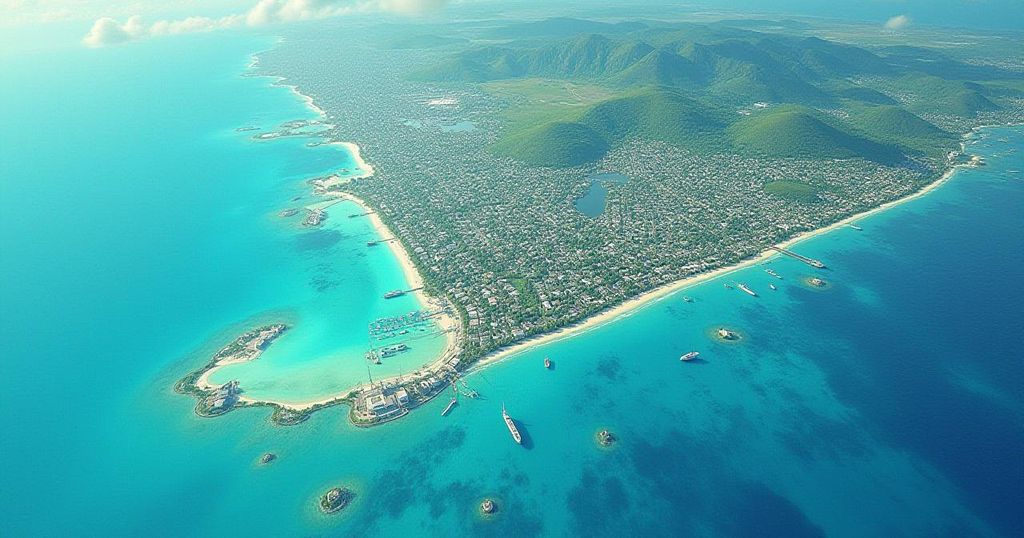NASA Satellite Insights Reveal Urgent Climate Crisis Threatening Coastal Towns

The year 2024 marked a significant heightening of climate change impacts, witnessing unprecedented global temperatures and extreme weather events, including record-setting hurricanes and severe rainfall patterns in South Africa. NASA satellites are vital in elucidating these climate shifts, demonstrating the correlation between human-induced climate change and rising sea levels, which endanger coastal towns. Statements from NASA scientists encourage proactive climate resilience measures among coastal residents to combat future extreme weather phenomena.
In 2024, record temperatures and intense climatic events underscored a dire reality for our planet. July of that year saw Earth’s average temperature reach an unprecedented level, with July 22 noted as the hottest day in over 175 years. This was in tandem with a record-breaking hurricane season, highlighted by the occurrence of Hurricane Beryl, the earliest Category 4 hurricane recorded. Conversely, regions like South Africa experienced unusual winter conditions, marked by severe rainfall and even snowfall during this typically dry season. A June report confirmed escalating concerns about human-driven global warming, indicating that the phenomenon has reached alarming levels. Notably, Space.com elucidated that climate change is accelerating the melting of glaciers, thereby raising sea levels and exposing coastal areas to increased storm damage and habitat displacement for wildlife. The destruction wrought by Hurricane Helene along the southeastern U.S. coast, alongside the devastation caused by Hurricane Milton in South Florida, further illustrated the lethal connection between climate change and storm intensity. South Africa is not exempt from these challenges, experiencing dramatic weather fluctuations, including floods and droughts. To combat these alarming issues, NASA and various space agencies are employing climate satellites to monitor the repercussions of climate change on meteorological patterns. Utilizing satellite gravimetry, scientists are gaining insights into ice mass loss and rising ocean levels. NASA’s Cedric David remarked on the profound capability of satellites to detect underground water storage changes, emphasizing, “that’s just mind-blowing.” Climatologists have consistently issued warnings regarding the implications of rising sea levels on coastal settlements. The Intergovernmental Panel on Climate Change anticipates that by 2100, sea levels could rise between 0.43 and 0.85 meters, a seemingly modest yet dangerously impactful increase for coastal regions. There lies a lofty hope that the data obtained from climate satellites will be instrumental in shaping policy decisions aimed at curtailing pollution and mitigating climate change effects. Cedric David stated, “We’ve had a series of radar altimetry satellites circling around our Earth since 1992… The 30-year-long curves of sea level rise are unquestionable evidence that our climate is changing.” Consequently, it is advisable for residents of coastal areas to implement measures to enhance their climate resilience in light of foreseeable extreme weather events.
The article addresses the pressing issue of climate change and its devastating effects on global weather patterns and coastal towns. In 2024, record-breaking temperatures and severe storms highlighted the urgent need for awareness regarding the impacts of human-induced climate change. Scientific insights from organizations such as NASA illustrate the correlation between climate change and rising sea levels, which threaten coastal communities. The article employs influential data and predictions from the Intergovernmental Panel on Climate Change to underscore the necessity for proactive measures to fortify coastal areas against extreme weather.
In conclusion, the alarming evidence of climate change reflected in the extreme weather events of 2024 serves as a critical wake-up call for humanity. The interplay between rising temperatures, intensifying storms, and melting glaciers emphasizes the urgent need for comprehensive climate action. The insights gained from climate satellites equip scientists and policymakers with invaluable data to address and mitigate the effects of climate change on vulnerable coastal communities. It is imperative that residents of these areas undertake necessary preparations to strengthen their resilience against the escalating threat of extreme weather.
Original Source: www.2oceansvibe.com






